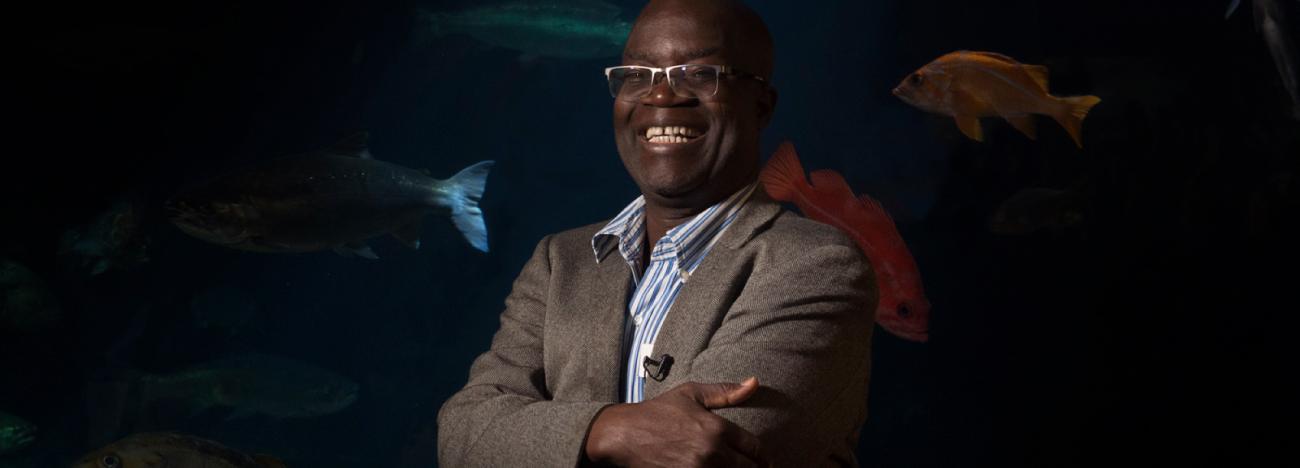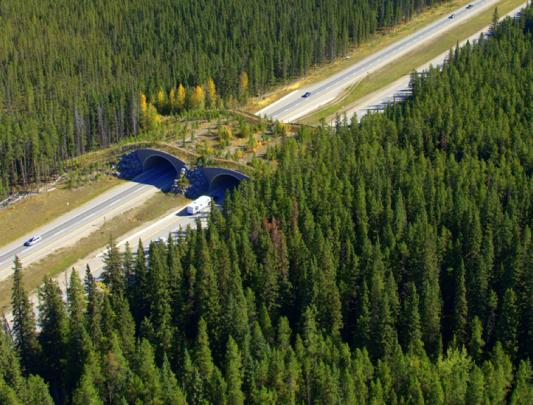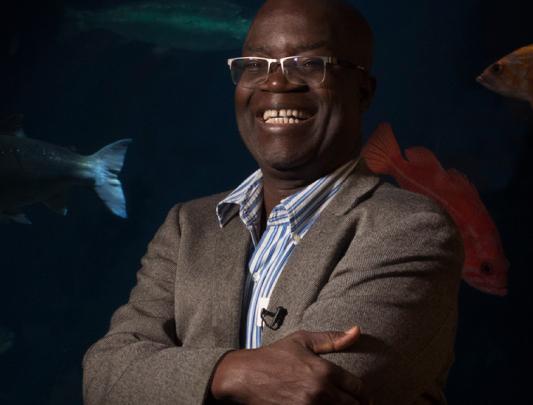Prof promotes idea for replenishing our oceans
The key to a sustainable world fishery may well lie in our ability to monetize conservation.
There’s no shortage of dire warnings about the world’s fisheries. The collapse of the East Coast cod fishery in 1992 and ongoing problems with the West Coast salmon fishery are just two close‑to‑home indicators that underline the fragility of ocean resources. Fisheries in the Mediterranean are quickly being depleted, while some fisheries off the coasts of Africa and Asia are already on deathwatch, due to the trifecta of overfishing, climate change and pollution. And while 14 per cent of the Earth’s landmass is protected from extractive use, just two per cent of global oceans are in actively managed marine protected areas (MPAs).
With overfishing, the degradation of vital marine habitats, the destruction of “by‑catch” species, illegal fishing and a general lack of governmental oversight, there is some doubt that the next generations of humankind will have access to the great bounty of ocean resources that we enjoy today. Worse still, this September the UN’s Intergovernmental Panel on Climate Change (IPCC) reported that unchecked pollution and CO2 production have caused the oceans to become warmer, more acidic, less able to hold oxygen and more permanently stratified. This attack on Earth’s oceans is, among other things, creating havoc on already challenged fish populations around the globe.
But hope does exist. Strategies are being developed to mitigate the dwindling supply of fish, and none as interesting and exciting as some of those at UBC. Rashid Sumaila, director of the Fisheries Economics Research Unit and Tier 1 Canada Research Chair in Interdisciplinary Ocean and Fisheries Economics, is part of an international team that is using methods immersed in economic theory to stimulate both awareness of and solutions to this crisis. He and the team are investigating “fish banks” – both on the high seas and within national waters – as a way to maintain vital fisheries and, at the same time, generate economic growth.
Sumaila, whose research centres around bioeconomics, marine ecosystem valuation and the analysis of global marine issues, formulated his interest in oceans and fisheries while pursuing his PhD in Norway. “You can’t get away from fish and the ocean in Norway,” he says with a laugh. His initial interest was in the economics of oil, but the economics of the world’s fisheries as they impact the ocean fascinated him. He tells his students that the ocean is too big, too important to destroy. “I tell them that since it’s 70 per cent of the world’s surface we can’t afford to mess it up. If you mess up 70 per cent of your exam, you’re going to fail. It’s the same in the ocean.”
In a recent paper in Science Advances, “The Economics of Fishing the High Seas,” Sumaila and the research team analyzed the relative profitability of high seas fishing in the countries that have the largest fleets (China, Taiwan, Japan, Spain, South Korea and Russia being the top six). The results were surprising. Using data from UN reporting agencies, and ship location data from Global Fishing Watch, which can track vessels in near real‑time globally (visit globalfishingwatch.org to view the real‑time map), the team learned that most of the high seas fishery is unprofitable.
Governments around the world subsidize their fleets to the tune of $4.2 billion annually, which is more than double the profits made. The team also found that forced labour and low‑wage labour were rampant and, combined with subsidies, the only way to rationalize these fisheries in the first place. While some specific high seas fisheries are profitable before subsidies – Chinese efforts in the northwest Pacific, for instance – on aggregate, current high seas fishing by China, Taiwan and Russia (countries that take 51 per cent of the high seas catch) would not be profitable without government subsidies and low labour costs. Other large high seas fisheries – Japan, South Korea, Spain and the US – showed profits ranging from negligible to around $250 million after subsidies were applied. These fisheries would prove unprofitable if subsidies were eliminated and fair wages paid.
“The richest part of the ocean is within the 200‑mile limit,” Sumaila says. As it turns out, research shows that less than one per cent of the fish caught on the high seas spend all their time beyond the 200‑mile limit. Most return to off‑shore locations to feed, grow and reproduce. Tuna, for instance, is a major high seas catch, but 78 per cent of tuna, according to research, go in and out of country waters. Why not fish these closer to shore, suggests Sumaila, where profitability is almost assured, without subsidy, and where oversight by national governments is more likely to regulate the catch.
By turning the high seas into a restricted fishing area – a fish bank – fish stocks would flourish, ready to be fished when they return to country waters. Policing such a fish bank would be daunting, Sumaila admits, but with emerging technologies and existing fining protocols through the World Trade Organization, establishment of huge no‑take zones would be possible. It’s an idea already embraced by the UN. “There is one high seas reserve, established near the end of Obama’s term,” says Sumaila. “It’s in Antarctica. I don’t know how they did it. Russia and China blocked it at first but the Americans were able to get it done.”
But the most fascinating idea for fish banks comes from the study of a reserve area off the northeast coast of Spain on the Costa Brava – the Medes Island Marine Reserve. The reserve was established in 1983 by the Catalan government. It provides for a one square kilometre no‑take zone in an area with one of the largest biomass of fish in the Mediterranean. The no‑take area has become even richer in fish biomass and provides local fishers with large fish spillover outside the zone. But the most impressive result of the reserve is the massive increase in tourism in the Medes Island area. From a small tourism economy before 1983, it now generates more than US$12 million annually for the local ecotourism economy through diving, snorkelling, glass‑bottom boats and other ocean activities. “This is a case of the fish being more valuable alive than dead,” says Sumaila.
Initially, local recreational and commercial fishers were dead set against the reserve, thinking it would have a negative impact on their incomes and their community. But within five years both fishery and tourism profits were greater than before the reserve was established. Could this formula work in other locations? Sumaila thinks so.
Initially, local recreational and commercial fishers were dead set against the reserve, thinking it would have a negative impact on their incomes and their community. But within five years both fishery and tourism profits were greater than before the reserve was established. Could this formula work in other locations? Sumaila thinks so. He and the team have developed a detailed business plan that plots expenses and incomes from start‑up to year eight.
They acknowledge that start‑up costs are formidable. Establishing, maintaining and policing the reserve (to eliminate fishers from outside the local area) requires a substantial outlay from local government. Creating tourist infrastructure is also expensive: dive shops must be designed and built, boats and gear purchased, advertising devised and disseminated, and tourist facilities developed. As well, local fishers need to be compensated for the initial loss of fishing income.
But the business model takes all these issues into account. Maintenance of the reserve area would be covered by a portion of access fees paid by divers and snorkellers, while fishers would be compensated by a portion of these fees and through profit‑sharing with tourist facilities. Although local governments would be tasked with policing and providing some of the infrastructure necessary to support the increase in tourist activity, the increase in tax revenue would be a win on all sides.
While it’s true that the Medes Island area had rich resources to begin with, there are many areas in the Mediterranean and along the coasts of Africa, South America and Asia that could flourish under a similar plan. And while existing reserves that are poorly managed often don’t result in an increase in fish biomass, ecotourism does increase in areas labelled “protected,” because of the attraction of exploring a pristine habitat.
Rashid Sumaila continues to make presentations to governments around the world, to the UN, to the High Seas Alliance and at industry conferences. “The creation of fish banks is a logical idea,” he says. And with the promise of economic gain attached, it just might become a practical one.
Such solutions may not address the overwhelming environmental threat currently faced by our oceans. But in a world mostly focused on economic growth and development, a business model that can solve potentially devastating problems is a high calling of academic research.


































